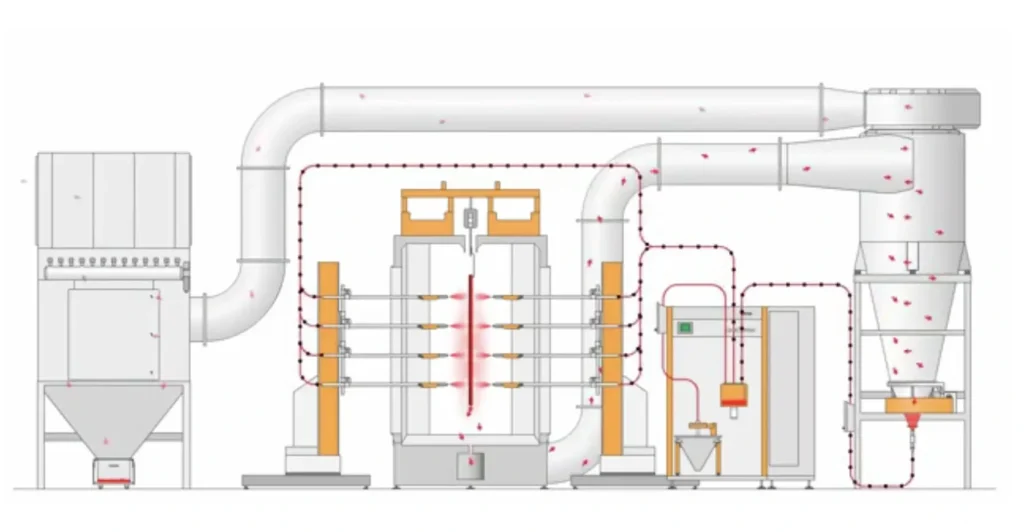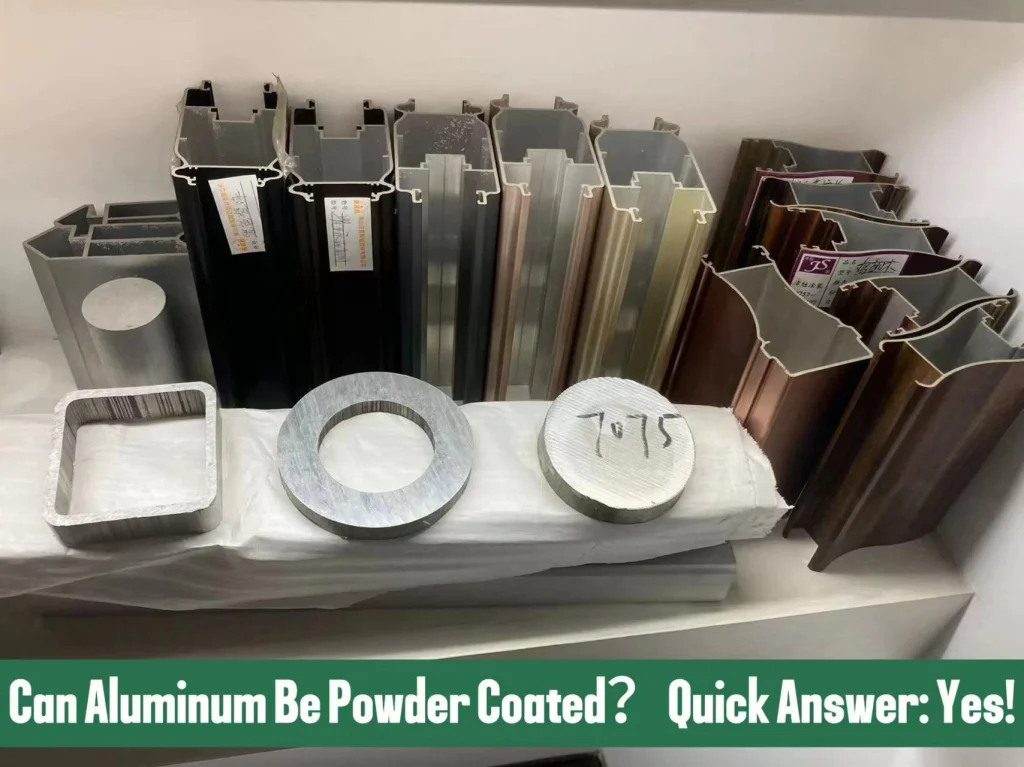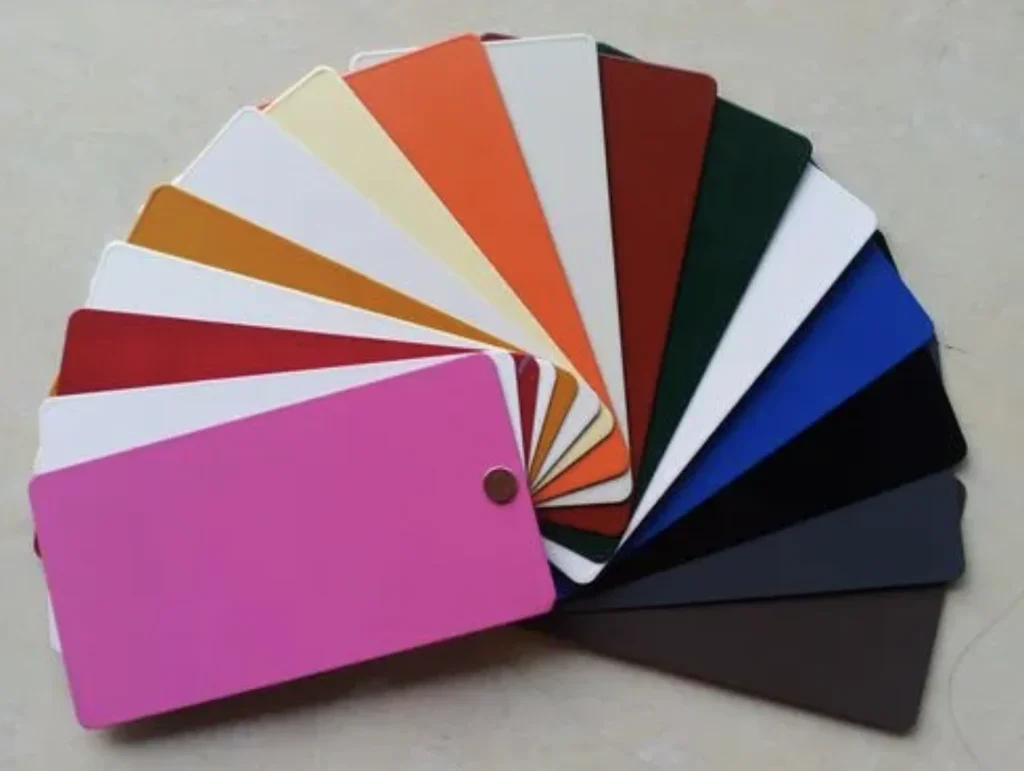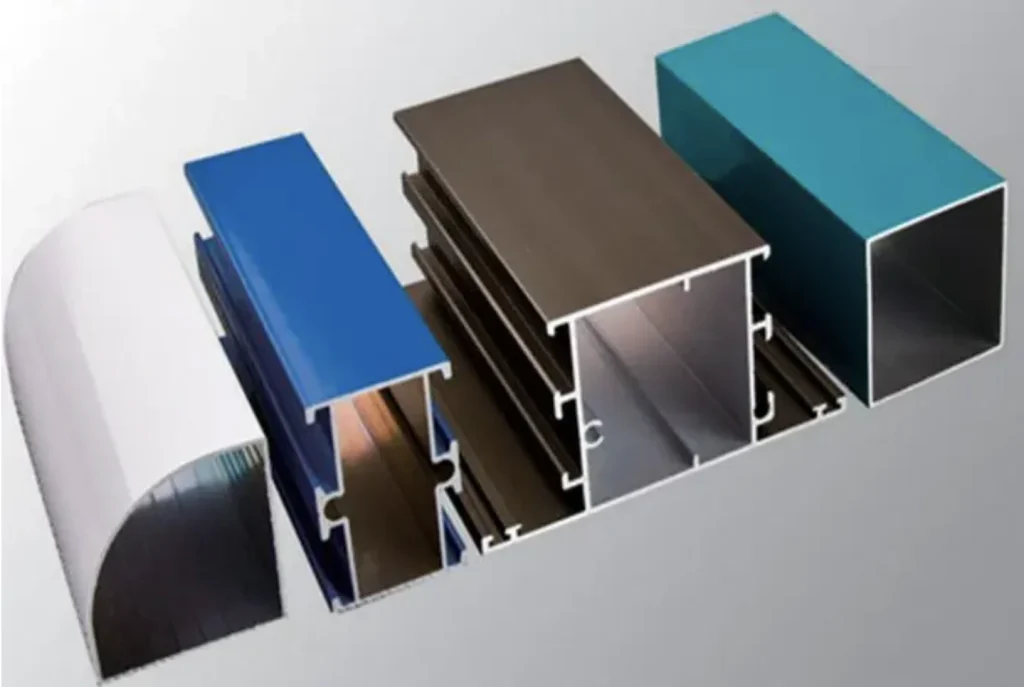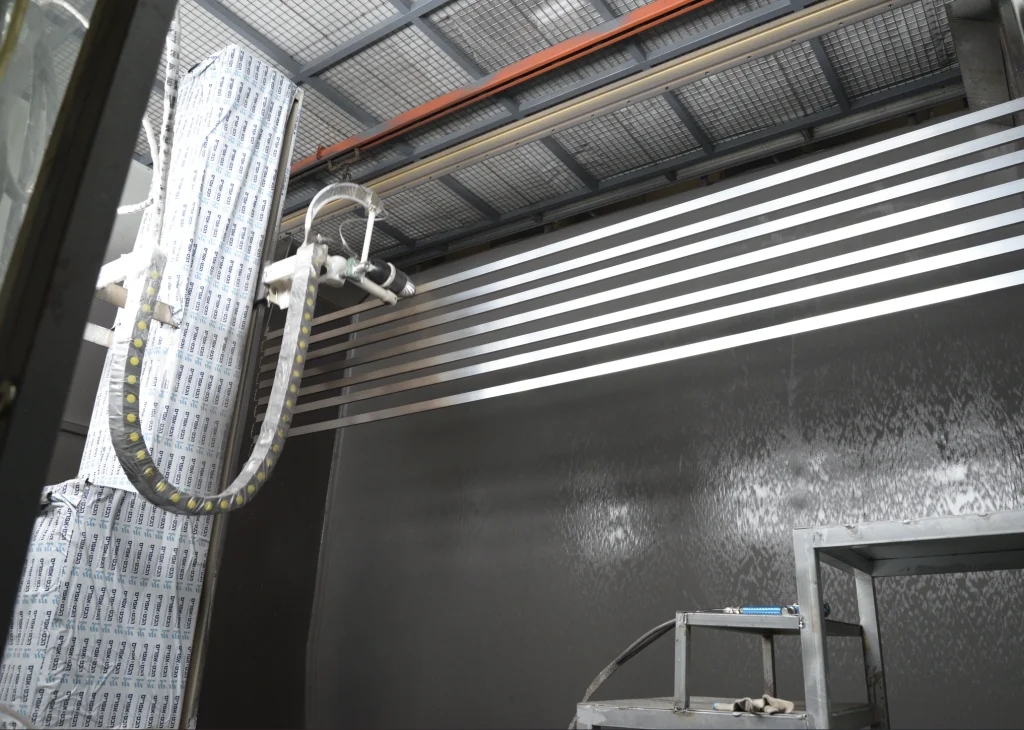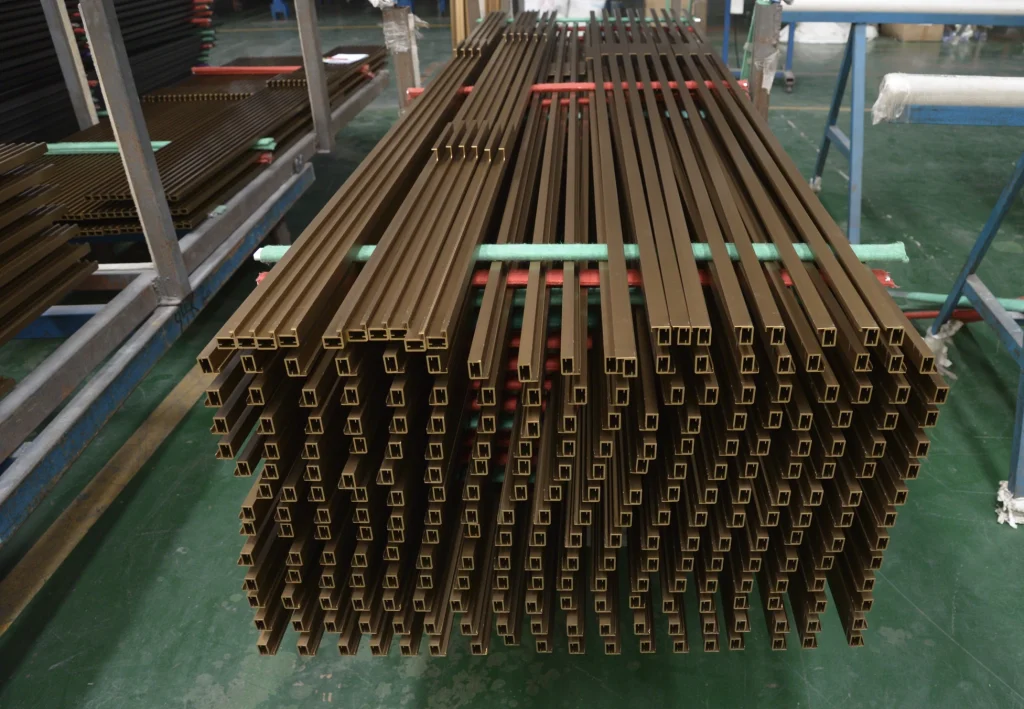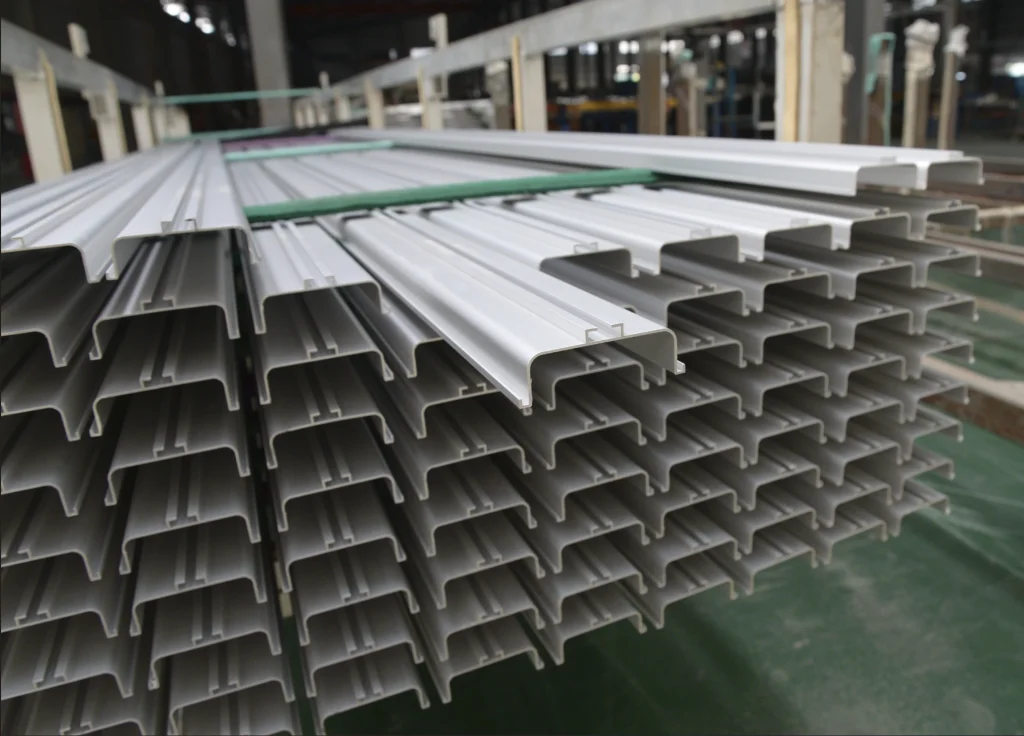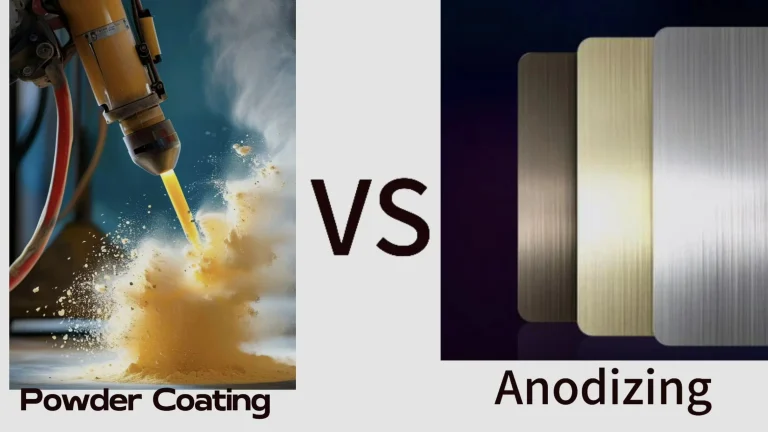Can Aluminum Be Powder Coated? What to Know

Can aluminum be powder coated? The simple answer is yes, aluminum can absolutely be powder coated, and it’s one of the best ways to add a durable, attractive finish to your aluminum products. Powder coating not only enhances the appearance of aluminum but also provides significant protection against corrosion, wear, and UV damage.
Whether you’re working with aluminum for outdoor furniture, automotive parts, or signage, powder coating is an excellent choice to ensure long-lasting performance. It offers a wide range of color options, making it versatile for both functional and aesthetic applications.
At Hugh Aluminum, we specialize in delivering top-quality powder coating services that guarantee a smooth, tough finish on aluminum products. With years of expertise, we ensure your aluminum parts are coated to perfection, enhancing both their durability and appearance.
Keep reading to learn more about why powder coating aluminum is the right choice for your next project!
What is Powder Coating?
Powder coating is a dry finishing process where a fine powder, typically composed of resin and pigment, is applied to a surface electrostatically. This powder is then cured under heat, allowing it to form a hard, protective layer over the material. The process is widely used in various industries, especially when durability, resistance, and aesthetic appeal are required.
Unlike traditional liquid paints, powder coating doesn’t rely on solvents. This makes it a more eco-friendly choice, reducing the release of volatile organic compounds (VOCs) into the environment. Whether for industrial machinery, outdoor furniture, or automotive parts, powder coating offers a versatile, durable solution for metal surfaces like aluminum.
By forming a thick, even layer, powder coating ensures that your aluminum surfaces are better protected against the elements, wear, and corrosion. It’s an effective way to enhance the lifespan and appearance of metal products.
Can Aluminum Be Powder Coated?
Absolutely, and it’s one of the best methods to protect and finish aluminum. Powder coating aluminum provides an extra layer of protection that helps guard against corrosion, UV damage, and general wear and tear. Aluminum, by nature, is already resistant to corrosion, but powder coating elevates this protection, especially in harsh environments or outdoor applications.
Many industries, from automotive to architectural, opt for powder coating aluminum due to its high durability and aesthetic versatility. You’ll often find powder-coated aluminum in outdoor furniture, metal fencing, signage, and vehicle parts.
This process enhances both the longevity and visual appeal of aluminum, making it a popular choice for manufacturers and consumers alike. Whether for functional or decorative purposes, powder coating aluminum is a tried-and-tested solution for ensuring your product stays strong and looks great for years.
How Aluminum Responds to Powder Coating
Aluminum responds well to powder coating, as long as the surface is properly prepared. The key to successful adhesion lies in cleaning and prepping the aluminum to remove oils, dirt, and oxidation. If these contaminants aren’t thoroughly removed, the powder may not adhere correctly, leading to peeling or bubbling.
The electrostatic application process allows the powder to bond strongly to the aluminum, creating a uniform coating. Aluminum’s high thermal conductivity ensures that the powder cures evenly when exposed to heat, forming a solid, durable finish. This makes the metal highly resistant to scratching, chipping, and corrosion.
However, aluminum does need to be treated carefully during the surface preparation process. Pre-treating aluminum with processes like sandblasting or phosphate coating can improve the powder’s adhesion and ensure the final coating is long-lasting.
Benefits of Powder Coating Aluminum
Powder coating aluminum offers a myriad of advantages, both practical and aesthetic. This finishing technique has gained significant popularity due to its durability, versatility, and environmental friendliness. Let’s delve into the key benefits that make powder coating aluminum a preferred choice for many applications.
Powder coatings are renowned for their exceptional durability. They are highly resistant to scratches, chips, and fading, ensuring that your aluminum products maintain their pristine appearance for years to come.
In addition to durability, powder coating also provides excellent corrosion resistance. Aluminum is naturally resistant to corrosion, but powder coating acts as an extra layer of protection against the elements. The coating shields the aluminum from moisture, chemicals, and other corrosive agents.
Aesthetically, powder coating offers a vast array of colors, textures, and multi-finishes, allowing you to customize your aluminum products to match your desired aesthetic. Whether you’re looking for a sleek, modern look or a more traditional style, powder coating can help you achieve your desired aesthetic.
Moreover, powder coating is a more environmentally friendly option compared to traditional liquid paints. The process involves using dry powder, which reduces volatile organic compound (VOC) emissions and waste. Additionally, overspray powder can often be recycled, further minimizing environmental impact.
While the initial cost of powder coating may be slightly higher than some other finishing methods, the long-term benefits outweigh the initial investment. The durability and longevity of powder coatings can lead to significant cost savings over time.
Why Powder Coat Aluminum?
Durability and Corrosion Resistance
Powder coating aluminum significantly increases its durability, offering protection against corrosion, UV rays, and harsh weather conditions. This is especially crucial for outdoor applications such as gates, fences, or playground equipment where the aluminum is exposed to constant weathering. The thick layer formed by powder coating acts as a barrier, preventing water, oxygen, and other corrosive elements from reaching the aluminum, thus extending its lifespan.
This increased durability also means less maintenance for the coated aluminum products. In contrast to painted aluminum, which may need frequent touch-ups or reapplication, powder coating ensures long-lasting protection without flaking or peeling.
Aesthetic Appeal
Powder coating is an ideal solution for those looking to add a visually appealing finish to their aluminum products. The process allows for a wide range of colors and finishes, including matte, gloss, and even textured options. This versatility makes it a popular choice for architectural applications where the finish needs to complement the overall design.
Additionally, powder-coated aluminum maintains its vibrant color for years, as the finish is resistant to fading from UV exposure. Whether you’re aiming for a sleek, modern look or a bold statement piece, powder coating offers endless customization options for your aluminum surfaces.
Environmental Friendliness
One of the biggest advantages of powder coating over traditional finishes like liquid paint is its eco-friendliness. Unlike paint, powder coating contains no solvents or volatile organic compounds (VOCs) that can be harmful to both the environment and human health. The overspray during application can also be recycled, minimizing waste.
The Powder Coating Process
Surface Preparation
The first and most important step in the powder coating process is surface preparation. Aluminum must be thoroughly cleaned and prepped to ensure the powder adheres properly. This involves removing any dirt, oil, oxidation, or other contaminants that might interfere with the adhesion. Typically, sandblasting or a chemical pretreatment (such as a phosphate coating) is used to roughen the surface slightly, allowing the powder to grip better.
Skipping or rushing this step can result in poor adhesion, which may lead to chipping, peeling, or bubbling of the powder coat. If you’re powder coating aluminum, always ensure that the surface is spotless and adequately prepped to guarantee a smooth, long-lasting finish.
Application of Powder
Coating Once the surface is clean, the next step is the application of the powder coating. This is done using an electrostatic gun that applies an electrically charged powder to the grounded aluminum. The powder particles are attracted to the aluminum surface due to the opposite charges, ensuring a uniform coating.This method ensures that every corner and crevice of the aluminum piece is covered.
Depending on the desired finish, multiple layers of powder may be applied to achieve the perfect thickness and texture. The key to a successful application lies in maintaining even coverage across the surface.
Curing Process
After the powder has been applied, the coated aluminum is moved into an oven for the curing process. The heat melts the powder, forming a smooth, durable layer over the aluminum surface. The temperature and curing time depend on the thickness of the coating, with typical curing temperatures ranging around 400°F (204°C) for 10-20 minutes.
The curing process is vital for transforming the powder into a hardened, protective finish. Improper curing can lead to issues like under-cured or over-baked coatings, both of which compromise the finish’s durability and appearance.
Choosing the Right Powder Coating for Aluminum
Types of Powder Coatings
When it comes to choosing the right types of powder coatings for aluminum, there are several options available depending on your project’s needs. The most common types include:
- Epoxy: Known for its excellent adhesion and durability, epoxy powder coatings are ideal for indoor applications. However, they are not UV resistant and may chalk when exposed to sunlight over time.
- Polyester: This is one of the most widely used powder coatings for aluminum, particularly for outdoor applications. It offers good UV resistance, ensuring the finish doesn’t fade or degrade when exposed to sunlight.
- Hybrid: A mix of epoxy and polyester, hybrid powder coatings offer a balance between adhesion and UV resistance, making them suitable for both indoor and moderate outdoor use.
Each type of powder coating has specific properties, so it’s essential to match the coating with the environmental conditions and wear requirements of your aluminum project.
Factors to Consider
When Choosing a Powder Coating When selecting a powder coating for aluminum, there are several factors to consider:
- Environmental Exposure: Will the aluminum be exposed to harsh outdoor conditions, or will it be used in a controlled indoor environment? For outdoor applications, a UV-resistant polyester coating would be the best choice, while epoxy might be more appropriate for indoor use.
- Desired Finish: Powder coatings come in various finishes, such as matte, gloss, and textured. The finish you choose should align with both the aesthetic and functional needs of your project. Gloss finishes provide a shiny, modern look, while matte or textured finishes can hide imperfections and provide a more subdued appearance.
- Durability Requirements: Consider the level of wear and tear the aluminum will face. If the part is prone to frequent handling or is in a high-traffic area, opt for a more durable powder coating with high impact resistance to ensure the finish lasts longer.
Applications of Powder Coated Aluminum
Industrial Applications
Powder-coated aluminum plays a vital role in various industrial applications due to its durability and resistance to harsh conditions. It’s used extensively in manufacturing environments where metal components are exposed to chemicals, moisture, and high temperatures. From machinery parts to heavy-duty equipment, powder coating protects aluminum from corrosion and wear, ensuring long-term performance and reducing the need for frequent maintenance.
In industrial settings, powder-coated aluminum is valued for its resistance to rust and its ability to withstand impacts, making it ideal for machinery, storage containers, and even electrical enclosures.
Architectural Applications
In architecture, powder-coated aluminum is a popular choice for exterior elements like window frames, facades, and decorative panels. The ability to resist UV rays, rain, and fluctuating temperatures makes powder-coated aluminum the perfect option for outdoor use. Moreover, its aesthetic flexibility-offering a variety of colors and finishes – makes it highly desirable for modern architectural designs.
Architects and builders often choose powder-coated aluminum for its sleek look and practical benefits. It can enhance the overall design of a building while offering reliable protection against the elements.
Outdoor Furniture and Fencing
Outdoor furniture and fencing benefit immensely from powder-coated aluminum due to its ability to withstand environmental factors such as moisture, sun exposure, and temperature variations. This makes it ideal for patio furniture, garden fences, and playground equipment.
The coating not only preserves the structure of the aluminum but also offers an array of color options, allowing for aesthetically pleasing designs that remain durable. With minimal maintenance required, powder-coated outdoor aluminum products can retain their vibrant color and structural integrity for years.
Automotive Parts
Powder-coated aluminum is widely used in the automotive industry for parts like wheels, frames, and trim. The coating protects these parts from road salt, grime, and impact, which are common issues in automotive applications. Additionally, powder coating offers superior resistance to rust compared to traditional paint finishes, ensuring that automotive parts last longer and look better.
It also enhances the appearance of car parts by providing a sleek, uniform finish, whether in matte, gloss, or metallic colors, giving vehicles an attractive, high-quality look.
Consumer Products
Beyond industrial and architectural uses, powder-coated aluminum is increasingly found in everyday consumer products such as appliances, electronics, and kitchen equipment. Items like refrigerators, air conditioners, and small kitchen tools are often made with powder-coated aluminum because of its resistance to scratches, dents, and wear.
Powder-coated aluminum ensures that these products not only maintain their appearance but also function reliably over time, making it a preferred material for manufacturers focused on delivering quality, durable goods to consumers.
Advantages of Powder Coating Aluminum Over Other Finishes
Powder Coating vs. Anodizing
Both powder coating and anodizing offer excellent protection for aluminum, but they serve different purposes. Anodizing creates a thin, protective oxide layer on the surface of aluminum, providing excellent corrosion and wear resistance. It is especially suitable for high-precision applications where a thinner finish is required, such as in aerospace or electronics.
Powder coating, on the other hand, provides a thicker, more robust layer of protection. While it might not offer the same level of precision as anodizing, powder coating is better suited for parts that need impact resistance and durability in outdoor conditions. Powder coating is also more versatile when it comes to color and finish options.
Powder Coating vs. Paint
When comparing powder coating vs. paint, powder coating comes out ahead in terms of durability and environmental friendliness. Unlike paint, which can chip, fade, and peel over time, powder coating forms a much more resilient layer that lasts longer even in extreme conditions. Additionally, the powder coating process produces less waste and emits fewer harmful chemicals, making it a more sustainable option.
Paint is typically cheaper and easier to apply in smaller DIY projects, but it does not offer the same level of protection or longevity as powder coating. For aluminum products exposed to the outdoors, powder coating is the clear winner in terms of long-term performance.
Durability and Longevity of Powder Coating
One of the most significant advantages of powder coating is its durability and longevity. Powder-coated aluminum can withstand heavy use, exposure to UV rays, and harsh weather for years without fading, chipping, or cracking. This makes it ideal for both indoor and outdoor applications, offering protection that lasts up to 20 years or more with minimal maintenance.
The longevity of powder coating makes it an excellent investment for businesses and consumers looking for high-performance finishes that maintain their aesthetic appeal over time.
Common Challenges When Powder Coating Aluminum
Surface Preparation Issues
One of the most common challenges in powder coating aluminum is surface preparation. For the powder to adhere properly, the aluminum surface must be meticulously cleaned and free of contaminants like oils, grease, or oxidation. Failure to prepare the surface correctly can result in poor adhesion, leading to peeling or flaking over time.
To ensure the best results, aluminum should go through thorough pre-treatment processes like degreasing, sandblasting, or chemical etching to remove any impurities that could affect the quality of the coating.
Avoiding Peeling and Cracking
Peeling and cracking of powder coatings can occur when the aluminum is not prepped properly or when the powder application is uneven. To avoid these issues, it’s crucial to apply an even layer of powder and ensure the curing process is completed at the correct temperature. Overheating or under-curing can weaken the bond between the coating and the aluminum, causing it to crack or peel prematurely.
Proper surface prep and controlled application are essential to achieve a smooth, durable finish that stands the test of time.
Proper Thickness of Powder Coating
Applying the proper thickness of powder coating is essential for ensuring durability while maintaining the desired finish. If the coating is too thick, it can lead to an uneven surface and potential bubbling during the curing process. On the other hand, a coating that’s too thin won’t provide sufficient protection and could wear down more quickly.
Balancing the thickness is key to ensuring that the powder coating provides adequate protection without compromising the appearance or function of the aluminum part.
Final Thought
So, can aluminum be powder coated? Absolutely! Powder coating is one of the best ways to protect and enhance the appearance of aluminum, offering long-lasting durability, resistance to corrosion, and a wide range of aesthetic options. Whether you’re working on industrial projects, outdoor furniture, or automotive parts, powder coating ensures your aluminum products are built to last.
At Hugh Aluminum, we specialize in providing top-quality aluminum and powder coating solutions tailored to your specific needs. Our team of experts is ready to help you choose the best powder coating for your project, ensuring a flawless finish every time.
Is powder coating the right choice for your aluminum products? Let’s discuss how we can help bring your vision to life. Reach out to us today and discover the Hugh Aluminum difference!

